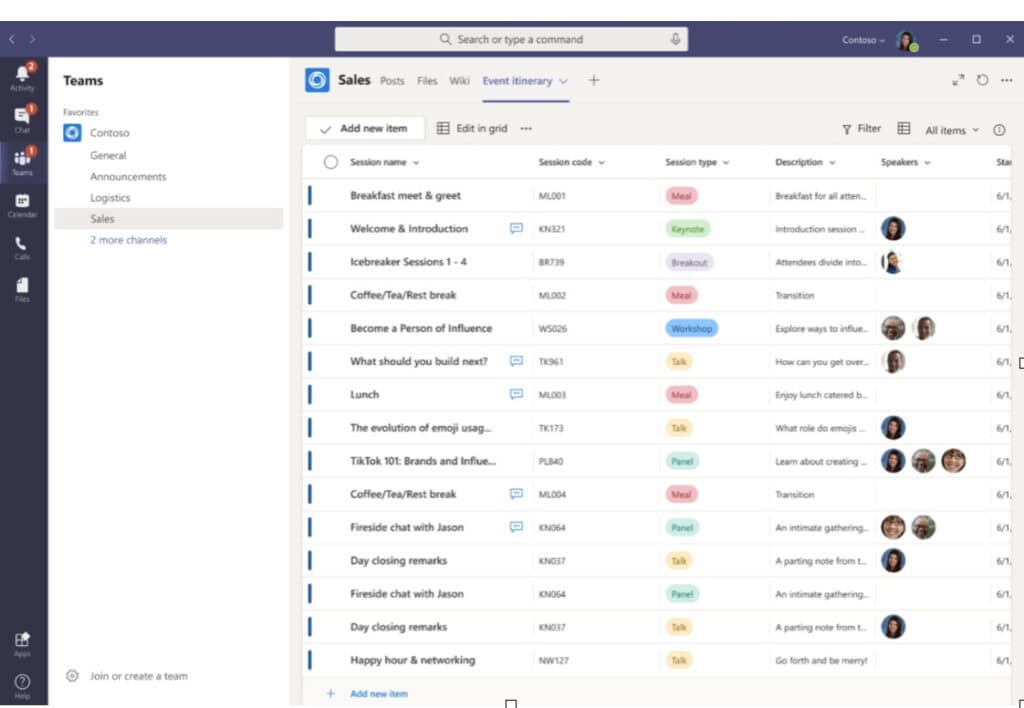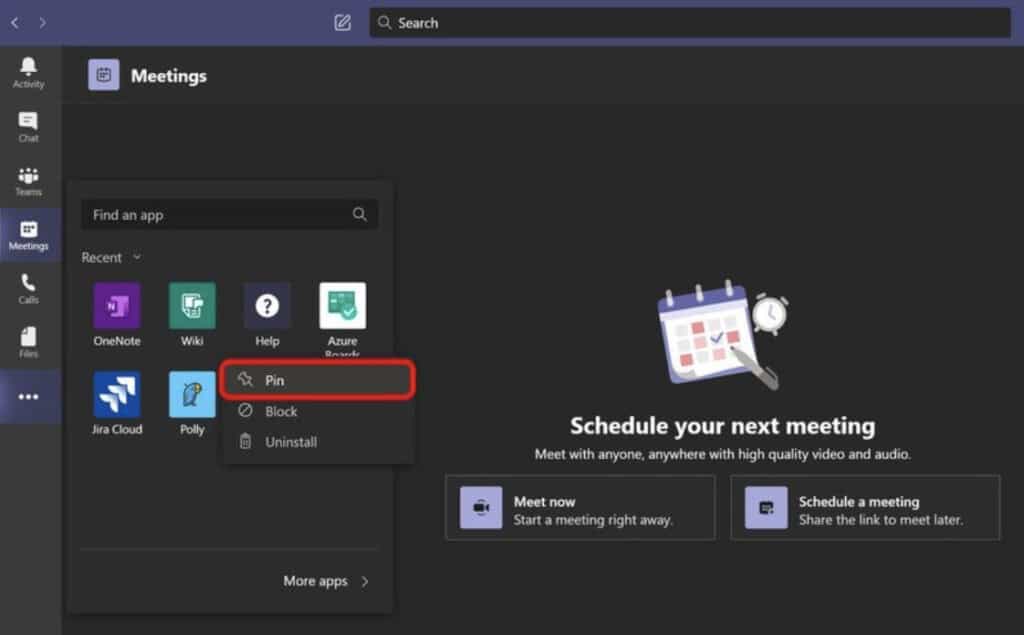As competition in the collaboration and voice market hots up, the leading players such as Teams and Zoom are rapidly introducing new features and functionality.
To compete with the serious inroads Zoom is making in the consumer space, Microsoft needs to balance the requirements of smaller customers hosting, say, an online yoga class with those of its large enterprise customers.
If Teams becomes too complicated, then it loses the more casual users. However, if it fails to meet the increasingly complex and diverse needs of a 100K strong industrial giant, then this will create opportunities for other specialist niche players.
No wonder Microsoft have been working so hard to introduce a host of eye-catching new features:
Together Mode
Teams’ new ‘Together Mode’ is geared to appeal to both the casual and commercial markets. It is essentially a virtual conference room that uses the familiar AI type technology that can blur out or provide a custom background, placing all users in the same virtual space.

This feature is reminiscent of Cisco’s TelePresence, which aims to make people feel like they are all in the same room together. Some see it as a bit gimmicky, but Microsoft insist that it addresses a number of important needs.
Research tells us that the massive increase in remote working during the COVID pandemic is making us all feel less connected. Together Mode addresses this issue well.
Microsoft also claim it decreases fatigue, increases productivity and makes the whole meeting experience more inclusive. Whether it will achieve all this is debatable but, at the very least, Together Mode can add a bit of fun to meetings.
Bigger Meetings
Looking at the needs of the enterprise marketplace, the capacity for meetings has also increased. As part of the advanced communications add-on plan, standard interactive meetings can now cater for up to 1,000 users. In Together Mode this might look a bit like a football crowd, and it will certainly take some planning to manage well.
For even larger meetings, Teams Live Events is the mode to use. This is a less interactive ‘view only’ mode. The size limit here is now 20,000 users. Once again, preparation and planning will play an important part in hosting a successful event.
Virtual Breakout Rooms
Virtual Breakout Rooms is another new feature that will become essential for managing larger interactive meetings. This allows people to step outside the main meeting to have a side discussion.
To give you an idea of what a difference this feature can make, a fun example is our very own Resonate virtual pub quizzes. With Virtual Breakout Rooms, each quiz team can temporarily leave the main quiz meeting to discuss their answers. We then rejoin the main meeting after each round to see how many questions we got right.
It’s easy to see how useful this feature could prove to be in business settings with different department teams present at those larger meetings.
Teams Lists
Teams Lists was announced a couple of months ago and is now generally available. It uses technology developed originally for SharePoint and can integrate with Power Automate.
Lists can be used for all kinds of purposes such as tracking issues, assets, contacts and inventories. The fact that it’s alert-driven enables you to easily keep track of changes and updates.

It will be interesting to see how use cases develop once creative dev ops teams start to explore the functionality of this feature in more depth.
Tasks for Teams
Tasks for Teams is the long-awaited re-branding and update for Teams Planner. This has been slowly rolling out since July, with an end date of September 2020. The rollout has become somewhat convoluted, as OnMSFT explain:
“As they continue to roll out the new Tasks experience in Teams desktop, the app name will initially remain as Planner, then change to Tasks by Planner and To Do, and then change to Tasks. That means that for now, you’ll still access the Tasks app from the Planner icon in Teams. Mobile users, though, will always see the app name as Tasks.”
The new Microsoft Teams Tasks app, explained.
In a nutshell, Tasks acts as a planning hub, consolidating an individual’s tasks – My Tasks and team plans – into Shared Plans, providing a List View (not to be confused with Lists). There’s plenty to say about this feature and we will be taking a closer look at Tasks for Teams in a future blog.
Customised Side Bars
This feature, enabling users to customise apps in the side bar, has been around for quite a while now. However, there were originally some issues that restricted its popularity. The Microsoft Teams engineering crew say these are now fixed and it’s available across all Teams deployments.
This feature allows users to pin and unpin apps and to rearrange their order. It should prove increasingly useful as more and more apps become available and the need to manage them all grows.

Noise Cancellation
Another area to watch out for in the future is noise cancellation. Zoom has made this a key feature and even allows for soft music to be added to those ubiquitous yoga classes. Currently, third-party add-ons are needed for this in Teams.
Hopefully, in the future a built-in Teams feature will stop those ‘can everyone go on mute please?’ moments when either barking dogs or other conference calls disrupt the meeting.
Resonate-UCC can help
If you would like to learn more about how these new features can benefit your Teams deployment, please get in touch. Resonate are exploring the use cases for Lists and how these can be augmented with Microsoft’s Power Platform.
If you have a specific need, let us know and we can discuss how to fulfill it. We might even be able to direct you to the best online yoga classes too.




